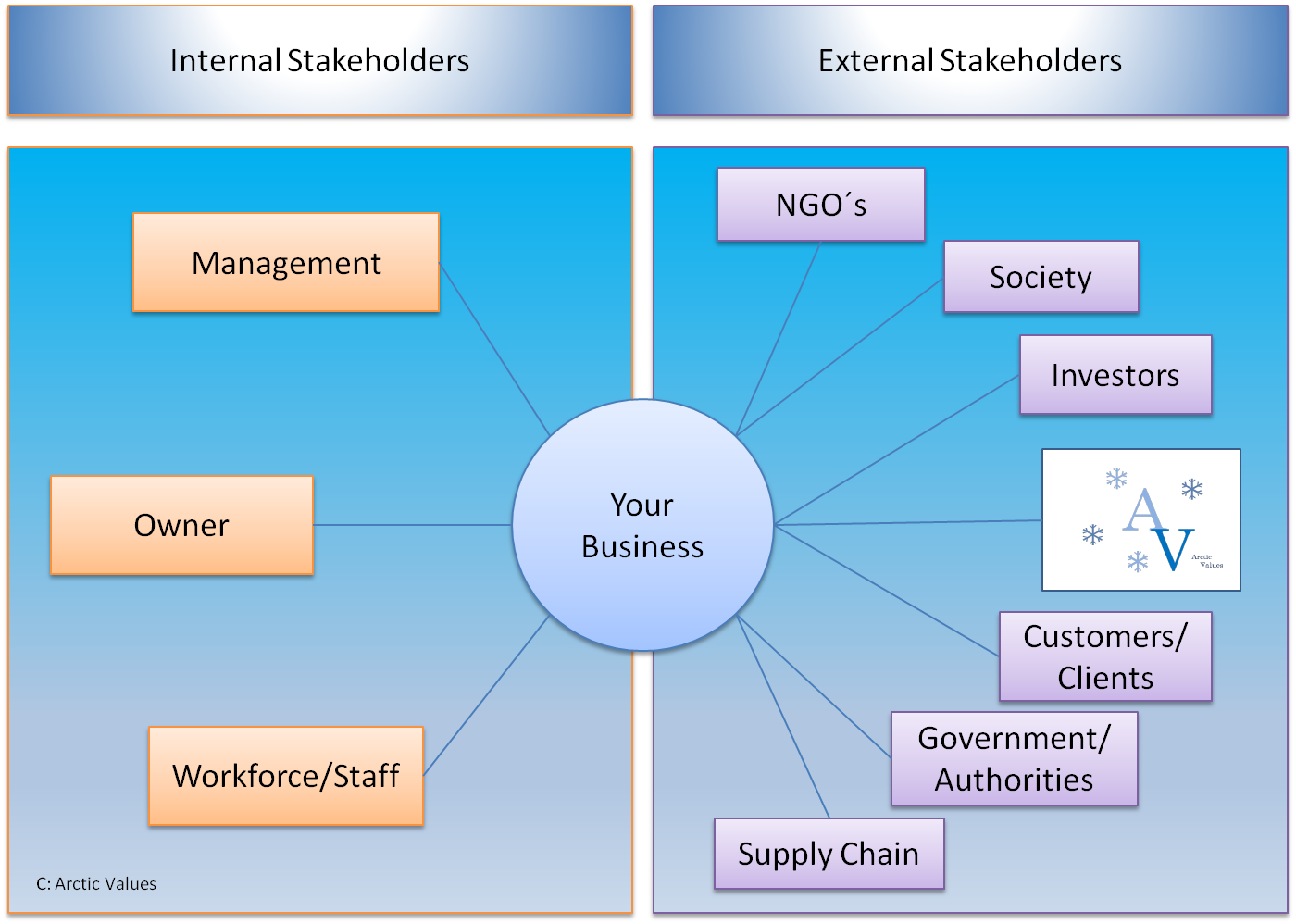
How to implement a successful stakeholder management?
What is a stakeholder and which role do they play for your business?
by Adrian Braun
A frequently neglected question in running a business is: Who are my stakeholders? Many managers think they are aware of their stakeholder universe and that good relations with everybody linked to the business had been established and go smoothly. By considering the stakeholder universe, it is initially essential to know; who a stakeholder is and what the notion in fact means. A very simple definition describes a stakeholder as anybody, who can affect or is affected by your business or organisation. This does not mean that the effects have to be exclusively positive or exclusively negative. Both sides of the coin are of relevance. It is not rare that businesses have specific stakeholder groups that receive impact, positively and negatively, by the same business activities at the same time. One prominent example in this context are local communities, who might feel disturbed by ecological impacts, but at the same time gain benefits, in terms of, wealth creation in the home area due to the related business activity.
As almost every business has a myriad of managerial decisions and processes, it is necessary to implement also a particular “stakeholder management”. In this context, it is a good idea to distinguish your stakeholders into internal and external stakeholders and to develop based on this approach a mapping chart.

Example of how you could map your stakeholders, distinguishing into internal and external groups that affect yourbusiness and/or are affected by your business
It also matters to what extent the stakeholders interact with you and if they proactively initiate contact with you or if their actions (with relevance to your business) are totally out of your vision. But hold on a moment, let´s enter the topic step-by-step.
Stakeholders that take the initiative and get in touch with you are possibly customers, clients, shareholders, investors and business partners, even though you have to provide of course incentives for these groups to attract their attention. These people cover widely the financial and product spheres of your business. Authorities, linked to your licenses, taxes, pension payments and other administrative issues, will also most likely get in contact with you frequently. All of these actors play a role in your business, but a pressing question remains, who are the stakeholders that never contact you, but affect your business just the same. Of course, there is not the one hundred percent clear answer, which is applicable for every business and this is another reason why the stakeholder management system should be in place.
Even though there are many more, I just would like to highlight two common stakeholder groups who are often neglected but could create difficulties for a business by imposing certain activities. First, to mention in this respect are NGO´s, following a specific theme, as for example environmental protection, human rights, fair labour conditions or health and safety. NGO´s are nowadays very well equipped in terms of using media channels and they are able to reach out to an amount of audiences as they have never before, largely dominated by internet-based communication in form of social media, blogs, vlogs and online information systems. NGO´s are different and they are following diverse strategies and different goals. Some understand themselves as helpers of the industry and as the ones that take the businesses at the hand and guide them to a brighter path. Others go to total opposition to the business and its practices and demand rather a stop than improvement. The latter group can particularly threaten a business, when they manage to find a large audience, but still their efforts go completely unnoticed inside the criticized business. The other group are the local communities, the neighbours of a business. Particularly, if ecological problems occur at the business side due to production and transport, they could raise their critical voices.

Overview of common stakeholder groups, many of those are certainly also of relevance for your business!
In the framework of stakeholder management, it is essential now to follow several steps.
- Identification of all stakeholder groups
- Clustering in primary and secondary stakeholders
- Listing who is in the communication network with the business and who is not
- Distinguishing, who is critical towards the business
- Establishing dialogue with all stakeholders >>> including the critical ones
- Finding common goals, consensus and continual improvement in terms of all stakeholder relations
Notably it is to mention that no stakeholder group should be treated or considered as enemy, even though they are possibly going into opposition with your business. Ask yourself and ask them:
- Why are they doing these actions against you?
- What are their arguments?
- What do they want you to do?
- How you could possibly help them and how they could help you?
- What could be common goals?
Without dialogue with critical stakeholder groups, the frustration on both parties will grow and the stakeholders will use their strengths to work against you and your enterprise by organising demonstrations, campaigns, strikes and publications that will put significant scratches on your business reputation. Two golden rules are, firstly, the more dialogue is practiced, the higher the chance of going conflict-free with your stakeholders, and secondly, the earlier a possible conflict is proactively communicated and negotiated with all interested parties, the easier (and cheaper) the conflict can be solved. Learn more about stakeholder management and the various benefits you can generate even in terms of customer & investor relations and product & service development by exploring the Arctic Values website.
